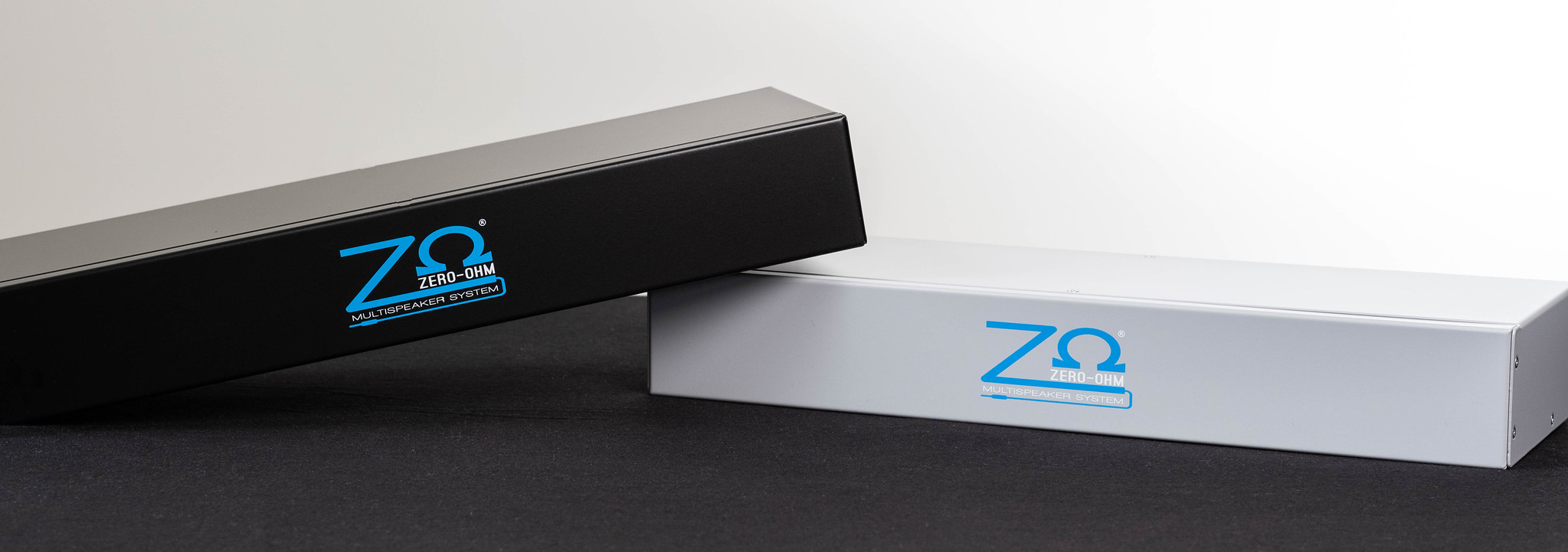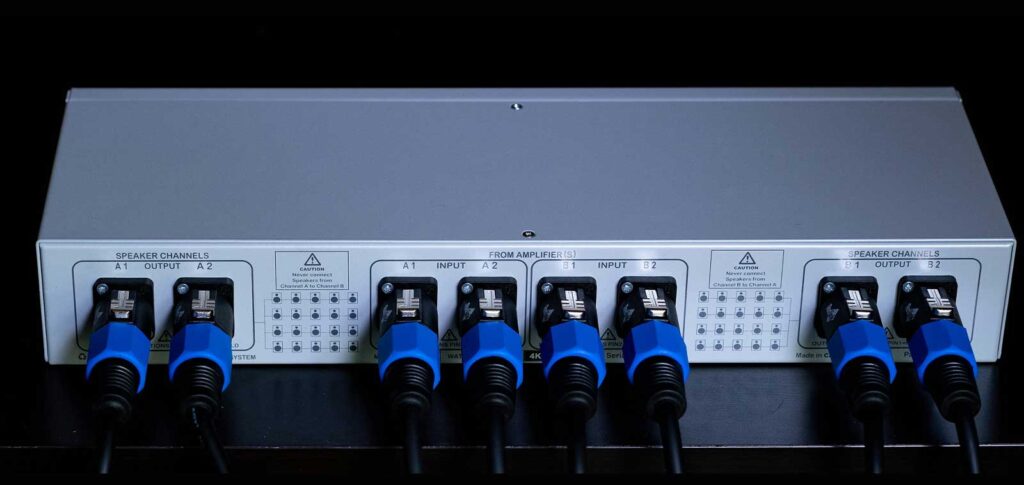
Zero-Ohm Systems is a Canadian company that has developed a somewhat revolutionary passive device that allows any amplifier to be interconnected to several loudspeakers without worrying about load impedances and cable lengths.
This device allows users to connect 20, 30, 40 or more loudspeakers in parallel to a single amplifier channel without the use of transformers, typical of 100 V systems. Until now, this possibility was conditioned by the possibility of running the amplifier at a very low load impedance for reasons we will explain in a moment. Although there are power amplifiers capable of operating safely at 4 ohms and 2 ohms, going below a threshold value results in the failure of the device (if not adequately protected) and consequent interruption of service.
Zero-Ohm, on the other hand, solves the problem at the source and for this reason is suitable for all installations in arenas and stadiums, amusement parks, bars, cinemas and theatres, reception halls, airports, cruise ships, hotels, outdoor shopping centres, restaurants, water parks and more.
Ligra DS has seized the opportunity of being able to distribute, exclusively for the Italian market, a device like this to installers and system integrators, which offers, among other things, a fundamental advantage: for the same number of loudspeakers, it considerably reduces the number of amplifiers required and consequently the costs.
The problem of load impedance
The laws of electrical engineering teach us that by connecting two identical loudspeakers in parallel, therefore with the same impedance, to the channel of an amplifier, the total impedance is halved. For example, using a pair of speakers with a nominal impedance of 8 ohms, the output stage of the amplifier sees a load of 4 ohms at its terminals. If the speakers are now changed from two to four, the resulting impedance becomes 1/4 of that of the single speaker, in this case 2 ohms. However, the output stage of the amplifier cannot continue to supply current when the load becomes too low, as the impedance it sees at the terminals comes dangerously close to short-circuiting. This reasoning leads us to understand how there is a maximum number of speakers that can be connected to a single amplifier.
In order to prevent the circuits from burning out, almost all amplifiers are equipped with more or less sophisticated protection circuits that 'disconnect' the device when the load seen falls dangerously below a certain threshold or reaches a certain temperature. The problem is that the amplifier stops working.
100 V systems and their limits

The Zero-Ohm solution/revolution
- No transformer required
- Several speakers can be connected in parallel (more than 40) without load impedance problems
- Possibility of using loudspeakers with any nominal impedance: 2, 4, 8, 16 ohm
- Uniform power distribution over long cable runs
- Unlimited frequency response in the audio band
- Cost reduction due to fewer amplifiers
There are four Zero-Ohm products currently available that are totally passive and belong to the Disruptor and Renegade series:

These devices have one pair, or four, inputs and two outputs A and B to drive the loudspeakers.


